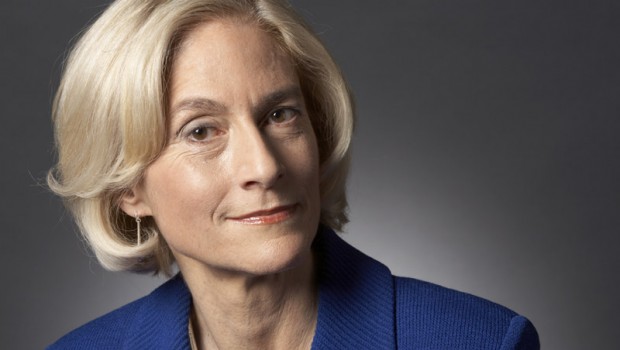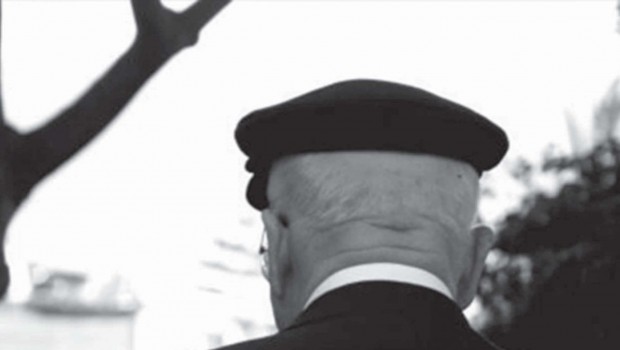The Objectification of Women with Martha Nussbaum
La cosificación de la mujer. Una conversación con Martha Nussbaum
Patricia Gras & Rose Mary Salum
Martha Nussbaum is the Ernst Freund Distinguished Service Professor of Law and Ethics at the University of Chicago. The founder and coordinator of the Center for Comparative Constitutionalism, Nussbaum has received honorary degrees from 40 colleges and universities and has written more than 15 books, including the recently released The New Religious Intolerance: Overcoming the Politics of Fear in an Anxious Age. She recently won the Prince of Asturias Prize for Social Sciences in Spain. The Rice University Program in Poverty, Justice and Human Capabilities in the Center for the Study of Women Gender and Sexuality and the James A. Baker III Institute for Public Policy invited her to speak and Literal had the opportunity to talk to her.
* * *
The first question is a prelude of what is morally and perhaps legally problematic about some common forms of expression on the Internet. We are talking specifically about the assault on women’s capability, can you elaborate on that?
Martha Nussbaum: Well, the concept of objectification has been used by feminists for many years, to talk about how women are treated as not full people with full human dignity, but as things to be manipulated and controlled by men. What I have written before about this says that it is really a complicated concept that includes denial of autonomy, denial of subjectivity. Not taking people’s feelings into account, but also treating them as a mere instrument. That is, a woman is not shown respect as an end in herself, but is treated as a mere instrument of male fantasy and male desire. The Internet opens that up in a big way because it is a relatively autonomous world in which someone who portrays a woman in a certain light, can create a whole story about her that is relatively immune to any kind of correction because it goes everywhere, it lasts forever, and then it can spill back and have real effect in the real world. When the woman is a well-known person it might not have such a big effect because so many different things are said about her as a person. But in the case of some women who have been harassed deliberately as law students or other kinds of just normal young people, that is not that case, because they are not well known. Therefore, the story about them that is concocted, the fantasy in which they are doing something that is like in a pornographic novel, but attached to their name and physical details about them, can define their reality in the eyes of the world and has a major impact on job opportunities. Even if their employers do not believe that they really did these things, it just taints the women. People are already afraid of women’s sexuality anyway, let’s face it, and so if they see this sexualized story, she will not be hired. We have had lawsuits where women have shown that indeed they were defamed in this way and as a result lost job opportunities but the anonymity of the Internet protects the abuser because now, who is the defendant? You do not know who you are going to sue. You can bring a lawsuit, but it is not going to do you much good if you cannot find out who the defendant is.
You mention that some people validate themselves by destroying, in this case, women. You also mention how powerless people gain power by using the Internet. This reminds us of one of the stories Plato mentions in The Republic. Does invisibility, in this case the Internet, always make people act unjustly?
MN: That is a good parallel. Of course Plato was saying that the invisibility would be a test of whether you value your moral principles. People under invisibility behave badly. I am afraid the Internet does prove that, because under the cover of anonymity, they certainly do not show themselves in the best light. I do not often write for blogs but even one time, when I wrote for the New York Times opinion blog, which is a very high quality blog, I got 700 comments. I would say that in that group, there were two that had an interesting argument. Otherwise it was just fulminating, sounding off.
You said something during your conference something that caught our attention. You mentioned that real intimacy requires sensitivity, but that culture stigmatizes qualities that are feminine. Please elaborate.
MN: I think many cultures teach young men that to be a real man, you have to be without deep needs for others and deep connections with others. You have to be the Lone Ranger out there on the frontier, just showing your strength by showing that you do not need other people. Now, that is an old story in feminism. Nancy Chodorow’s great book, The Reproduction of Mothering, was all about that. However, I think the Internet now shows us new ways that men can act out that fantasy because they really can be impervious to others and they do not need connections with others. So if we are going to change this behavior, then I think we need to change the culture of maleness in our own society and probably, no doubt, in other societies too.
How do we change the culture of maleness?
MN: Well I think that, of course the family is at the root of it. The way boys are brought up, and the way they are talked to about empathy can do quite a lot. However, the peer culture also has great power. We know from psychological research that people are very, very responsive to peer pressure. That they are willing to do things that they otherwise would not. So, in addition, we have to do what we can to shape that peer culture. Now how do we do that? That is much harder. Sometimes, of course, a good family can produce a young man who resists the peer culture. But it is hard, when you are young. I think institutions could do quite a lot by making rules that describe certain behavior as inappropriate, by talking a lot about equality and dignity, and by empowering women to speak up themselves and to protest themselves. In law school women told me that if they felt pornographic signs were put up in a student lounge that kind of subordinated and assailed women, they would feel empowered to go up there and repeat to these men what the dean had said, and namely that in a community, we have to respect one another and we have to cultivate civility. Now I thought that what this dean of students had said was very important, because then from the very first day that they are there, they hear a strong message that certain behavior is not appropriate.
The objectification of women usually comes down to the female body. What is so powerful about the female body that draws so much energy from both men and women? Does it go back to religion or is it purely biological, since we are child-bearers?
MN: Well, I think it is part of the group of phenomena. I have studied the emotion of disgust a lot. Research on disgust shows that all of us are uncomfortable with the signs that mirror animals, that show we are mortal. And so the bodily fluids, the corpse, all of those things that psychologists call “animal reminders,” are heavily avoided. They are viewed as contaminating and they are stigmatized. In a second step, people who somehow come to represent those stigmatized things, fluids, decay and so on, are subordinated as a result. Now, in many cultures it seems pretty arbitrary how those groups get constructed in that role, maybe it is because of fear or anxiety, sometimes it is Jews, sometimes it is lower castes in Indian society, sometimes Muslims in India today, but women, in more or less all cultures, come in for that kind of projected disgust, as I put it. That is to say they are associated with the things about the body that are feared and viewed as contaminating because they give birth but also because they are seen as sights of fluid, the menstrual period, they are also seen as the receptacles of male semen, which is something that males feel anxious about. For all these reasons, the researchers who work on disgust think that misogyny is connected ultimately with people’s own anxiety about their own bodies. Rather than say, “Oh I emit these fluids myself, and that is one sign that I am an animal body, and I will die,” well, people do not want to say that, they would rather say, “Oh I’m above all this. But there is this woman over there, and she is the animal one, and the hyper bodily one.” A lot of the whole story of high European culture is about transcendence of the mere physical, the idea that we really as humans ought to be thinking of ourselves as above the body and its desires.
When the majority of the world’s population is made up of women, why have we allowed this to happen? What is in it for us?
MN: Well, that is a very good question. I think of course that unequal physical strength is back in pre-history, but that is a big factor. Maybe it still is, because after all, upper body strength is a factor in rape, it is big factor. A woman could work out as much as she can to improve her upper body strength, but it is not going to be equal to that of most men. So there is that. I think that it has translated into a long-term situation of subordination and control in which women themselves get used to it, and they habituate themselves to it, and they often collaborate with it. Unfortunately, women are part of the problem too.
Can women objectify women?
MN: Oh yes. Women participate in all the objectifying practices that feminists find objectionable and feminists themselves may do so: plastic surgery, the wearing certain kinds of revealing clothing. Any high school dance will show you teenage girls who will have every opportunity and every invitation to consider themselves as full human beings objectifying themselves in little micro skirts. Now, I love fashionable clothing, and I love high-heeled shoes and all these things. So I do not think there is anything wrong in all these women participating in practices that are playful, that are fun, that are sexy. The only problem comes when that blurs into defining yourself as unequal, and of unequal dignity and worth.
Can you elaborate on the reevaluation of values? What sort of education should be encouraged? We talked a little about the boys, but what about the girls?
MN: Well let me say a little more about the boys. I think we have to start by talking to children about people’s feelings. Research shows that mothers spend less time talking to little boys about feelings that children have when something happens, that they have, that their friends have, than they do talking to girls. Cultivating the emotional sophistication, the emotional awareness would be an answer. And that is done partly by talking about what just happened. Why did Johnny cry when you took his ball away? But it also happens through the arts, music, dance, through stories in which people make their own emotional geography more rich and complex. I think both boys and girls need that. And then, of course, in the case of girls, it is important to cultivate as well the sense of equal worth and dignity and provide them with the right to get angry and speak up. I think justified anger is something women have trouble with. Men often are much more up front about their anger when someone insults them, and recognize it right away. Whereas women often are inhibited about anger and so they do not even realize that they are angry. It becomes a kind of corrosive force. I think recognizing and giving voice to anger in a way that is appropriate, that demands social justice.
Why is it so hard for women, are we socialized not to get angry? Or is it just not acceptable for women to get angry?
MN: It certainly is not. I mean boys are affirmed when they are angry. This goes back into infancy. There is research among infants where the same infant is first described as he and then described as she. Then they look at how the experimental subjects treat the child. Now one thing they find is that when they think it is a boy, it will be bounced in the air and a little girl will be sheltered and held close. But the other thing they find is that when this baby, the same baby, mind you, is crying, the ones who think it is a boy will say, “Oh, he is really angry isn’t he? He wants to get what he wants!” And if they think it is a girl, they say, “Oh poor thing, she is so frightened.” So, you know, that translates into different ways of interacting with the child, different ways of treating the child. By the time you get a 4 or 5-year-old child, then you get a different personality type. I think we do not know anything about the extent to which these differences have a biological basis because we know that the social conditioning begins so early.
Now, back to solutions for this problem. We talked about teaching young men and young women about this. How early should we start doing this?
MN: Well I think that last story shows that we have to start teaching ourselves even while we are holding babies. We have to remember that the way you shelter a child, the way you project your own fantasies of emotion onto a child has an impact, and you do not want to do it unequally. You have to recognize, of course, individual differences among children, but you also do not want to project stereotype-gendered differences in the way you characterize the child. And then I think just talking about life should go on all through. I mean we now know that children are very, very cognitively mature. Even when they are one year old they cannot speak, but they take in quite a lot. And we know that they are capable of seeing the world from another person’s point of view. So, then, singing little songs, telling little stories, all of this, even representing stories about little animals in some ways, this is a big thing. I think by now we do pay attention to children’s literature and how it represents the genders. Even my own daughter, who is now in her late 30’s, had a book, I remember, I got it for her of course, it was called Trudy Teacher, and it was about the different professions. But they were very careful to represent how women could be telephone line repair people up on the pole, or a man could be something that is more typically feminine, a beautician or whatever. And so I think that kind of teaching, and that is for 3-year-olds, 4-year-olds. They just learn that different professions are open to both.
Is there any way we can change the cultural patterns about how we talk about masculinity and femininity? In the media, in public culture…
MN: We just had a conference at our law school on men who were in American law and literature about how the culture of masculinity influences American law, and we were looking at different literary ways of talking about masculinity. One thing that emerged was that the dominant culture can learn a lot from other minority cultures. For example, we had people work on gay fiction, and the gay norms of masculinity of course sometimes partake in the dominant norm of masculinity, but they also offer outsider possibilities. And so Michael Warner, the very interesting gay theorist, had a paper that was called Manning Up, about how constraining it is for men in the dominant culture to always feel they have to come up to some mark, and what a straightjacket it is for the person’s emotional life. But then he had this idea of sideways movement. Are there possibilities of escape, and sort of just moving slightly to the side from that dominant norm. And yes, I think we felt that. I mean, my paper was about Jewish norms of masculinity, which offer a different set of norms that are quite interesting and can offer different possibilities of sideways movement too. So I think it is good to investigate the varieties of masculinity and the process of thinking about ways in which someone could be a real man yet be unmanly in the traditional sense.
Traducción de Eugenia Noriega
La Dr. Martha Nussbaum ocupa la cátedra de Profesor Distinguido Ernst Freund de Derecho y Ética en la Universidad de Chicago. Fundadora y coordinadora del Centro para el Constitucionalismo Comparativo, la Dra. Nussbaum ha recibido títulos honorarios de 40 universidades y ha escrito más de 15 libros, incluyendo la publicación reciente de The New Religious Intolerance: Overcoming the Politics of Fear in an Anxious Age (La nueva intolerancia religiosa: vencer la política del miedo en una época ansiosa). El Programa de Rice en Pobreza, Justicia y Capacidades Humanas en el Centro para el Estudio de Género y Sexualidad de la Mujer y el Instituto James A. Baker III de Políticas Públicas la invitaron a dar una conferencia y Literal tuvo la oportunidad de hablar con ella.
* * *
La primera pregunta es un preámbulo de qué es problemático en términos morales y quizá legales respecto de algunas formas de expresión comunes en la Internet; hablamos específicamente del asalto a las capacidades de la mujer. ¿Podría profundizar sobre esto?
MN: Las feministas usan el concepto de cosificación desde hace años para referirse al modo en que se trata a las mujeres como cosas que los hombres pueden manipular y controlar, y no como personas completas, con plena dignidad humana. Lo que he escrito anteriormente sobre esto dice que en realidad es un concepto complicado, que incluye la negación de la autonomía y la subjetividad, que es no tomar en cuenta los sentimientos de las personas y tratarlas como un mero instrumento. Es decir, no se respeta a una mujer como un fin en sí misma, sino que se le trata como un mero instrumento de la fantasía y el deseo del hombre. La Internet exacerba esto porque es un mundo relativamente autónomo en el que alguien que pinte a una mujer bajo cierta luz puede crear toda una historia sobre ella, con relativa inmunidad a cualquier tipo de corrección, y esa historia va a llegar a todos lados, va a durar para siempre y después se puede filtrar y tener un efecto real en el mundo real. Cuando la mujer es una persona bien conocida quizá no tenga un efecto tan grande, por tantas cosas distintas que se dicen sobre ella como persona. Pero en el caso de algunas mujeres que han sido acosadas deliberadamente, como estudiantes de derecho u otro tipo de personas normales y jóvenes es distinto, porque no son bien conocidas. Por lo tanto la historia que se urde sobre ellas, la fantasía en la que están haciendo algo que es como en una novela pornográfica, pero que está vinculada a sus nombres y a detalles físicos sobre ellas, puede definir su realidad ante los ojos del mundo y tiene un impacto trascendental sobre sus oportunidades laborales. Incluso si sus empleadores no creen que realmente hayan hecho esas cosas, las mujeres quedan mancilladas. La gente de por sí le teme a la sexualidad de la mujer, hay que aceptarlo, y si ven esta historia sexualizada no la van a contratar. Hemos tenido demandas judiciales en las que las mujeres han demostrado que de hecho fueron difamadas de este modo y como resultado perdieron oportunidades laborales, pero el anonimato de la Internet protege al abusador porque ahora, ¿quién es el demandado? No sabes a quién vas a demandar. Puedes presentar una demanda pero no va a servir de mucho si no puedes averiguar quién es el demandado.
Mencionó que algunas personas se validan a sí mismas a través de la destrucción, en este caso, de mujeres. También habló de cómo las personas impotentes obtienen poder a través de la Internet. Esto nos recuerda una de las historias que cuenta Platón en su diálogo La República: la invisibilidad, en este caso la Internet, ¿siempre hace que la gente actúe injustamente?
MN: Es un buen paralelo. Claro que Platón decía que la invisibilidad sería una prueba de cuánto uno valora sus principios morales. Bajo el manto de la invisibilidad la gente se comporta mal. Me temo que la Internet sí demuestra esto, porque el anonimato encubierto definitivamente no resalta lo mejor de las personas. No suelo escribir para blogs, pero una vez que escribí para el blog dogmático de The New York Times, que es de muy alta calidad, recibí 700 comentarios. Diría que en ese grupo hubo dos que tenían argumentos interesantes; el resto sólo vituperaba y despotricaba. En el anonimato la gente no exhibe su mejor comportamiento.
Durante su conferencia mencionó algo que llamó nuestra atención: dijo que la verdadera intimidad requiere sensibilidad, pero que la cultura estigmatiza las cualidades que son femeninas; también acabamos de hablar de esto. Por favor háblenos más sobre eso.
MN: Creo que en muchas culturas se les enseña a los hombres jóvenes que para ser un hombre de verdad no hay que tener necesidades profundas de otros, de conexiones profundas con otros. Uno tiene que ser el llanero solitario, allá en la frontera, y demostrar su fuerza probando que no necesita a nadie. Ésta es una vieja historia en el feminismo, de eso se trató el gran libro de Nancy Chodorow, The Reproduction of Mothering (La reproducción de la maternidad). Sin embargo, creo que ahora la Internet nos muestra nuevas formas en que los hombres pueden actuar esa fantasía, porque realmente pueden ser insensibles a otros y no necesitan conexiones con otros. Así que si vamos a cambiar este comportamiento, creo que tenemos que cambiar la cultura de masculinidad en nuestra propia sociedad y probablemente sin duda en otras sociedades también.
¿Cómo cambiamos la cultura de masculinidad?
MN: Por supuesto la familia es el núcleo de todo. La manera de educar a los niños, de hablarles sobre la empatía, puede cambiar mucho. Sin embargo, la cultura de pares también es muy poderosa. Con base en investigaciones psicológicas sabemos que la gente responde mucho a la presión de los pares, que están dispuestos a hacer cosas que de otro modo no harían. Así que, además, tenemos que hacer lo que podamos para modelar esa cultura de pares. Ahora, ¿cómo hacemos eso? Es mucho más difícil. A veces por supuesto una buena familia puede producir a un hombre joven capaz de resistirse la cultura de pares, pero para un joven es difícil hacer esto. Creo que las instituciones podrían hacer mucho creando normas que describan ciertos comportamientos como indebidos, hablando mucho sobre igualdad y dignidad, dándoles a las mujeres el poder de hablar y protestar por sí mismas. En la facultad de derecho las mujeres me decían que si les parecía que los carteles en el área de descanso de estudiantes eran pornográficos o que de algún modo subordinaban o atacaban a las mujeres, se sentirían con el poder de enfrentar a esos hombres y repetirles lo que había dicho el decano, básicamente que en una comunidad debemos respetarnos unos a otros y cultivar la civilidad. Pienso que lo que dijo este decano es muy importante, porque entonces desde el primer día saben que ciertos comportamientos son inaceptables.
La cosificación de la mujer por lo general tiene que ver con el cuerpo femenino. ¿Qué poder tiene el cuerpo femenino, que consume tanta energía de hombres y mujeres?¿Se remonta a la religión o es puramente biológico, porque somos capaces de dar a luz?
MN: Creo que es parte del grupo de fenómenos. He estudiado mucho la emoción del disgusto. Esta investigación muestra que todos nos sentimos incómodos con las señales que reflejan animalidad, que somos mortales; de modo que evitamos con vehemencia los fluidos corporales, el cadáver, todas esas cosas que los psicólogos llaman “recordatorios animales”. Los percibimos como contaminantes y los estigmatizamos. En un segundo paso, la gente que de algún modo llegó a representar estas cosas estigmatizadas –los fluidos, la decadencia y demás– queda subordinada como resultado. En muchas culturas el modo en que esos grupos se construyen en ese rol parece bastante arbitrario, tal vez es por miedo o ansiedad, a veces son los judíos, a veces son las castas menores en la sociedad india, a veces los musulmanes en India hoy; pero las mujeres se presentan para ese tipo de disgusto proyectado, como yo lo pongo, en casi todas las culturas. Esto quiere decir que están asociadas con las cosas del cuerpo que son temidas y percibidas como contaminantes porque dan a luz, pero también porque son vistas como seres de fluidos, el periodo menstrual, y porque son vistas como receptáculos del semen masculino, cosa que provoca ansiedad a los hombres. Por todas estas razones, los investigadores que trabajan sobre el disgusto piensan que en el fondo la misoginia está conectada con la ansiedad que la gente siente con respecto a sus propios cuerpos. La gente no quiere decir “Yo también emito esos mismos fluidos, y esa es una señal de que soy un cuerpo animal y voy a morir”, prefieren decir, “Yo estoy por encima de esto, pero ahí hay una mujer, y ella es la animal, la híper-corporal.” Gran parte de toda la historia de la alta cultura europea se yergue sobre la trascendencia de lo meramente físico, sobre la idea de que nosotros como humanos deberíamos pensarnos como por encima del cuerpo y sus deseos.
Siendo que la mayoría de la población mundial está compuesta por mujeres, ¿por qué hemos permitido que pase esto? ¿Qué ganamos?
MN: Ésa es una muy buena pregunta. Creo que por supuesto la fuerza física desigual viene desde la prehistoria, eso es un factor importante. Quizá aún lo sea porque, después de todo, la fuerza física es un factor en la violación, un factor importante. Aunque una mujer haga todo el ejercicio que pueda, no va a conseguir que su fuerza física sea igual a la de la mayoría de los hombres. Creo que esto se ha traducido a una situación de subordinación y control a largo plazo a la cual las mujeres mismas se acostumbran. Se habitúan a ella y con frecuencia colaboran con ella. Lamentablemente las mujeres también son parte del problema.
¿Las mujeres pueden cosificar a las mujeres?
MN: Claro que sí. Las mujeres participan en todas las prácticas de cosificación que a las feministas les parecen reprobables, y las mismas feministas lo pueden hacer: cirugías plásticas, llevar cierto tipo de prendas reveladoras… en un baile de secundaria vas a encontrar a chicas adolescentes que tienen la oportunidad de considerarse seres humanos completos, que han sido invitadas a hacerlo, y se cosifican usando falditas diminutas. Ahora, me encanta la ropa de moda, y me encantan los zapatos de tacón y todas estas cosas, así que no creo que tenga nada de malo que todas estas mujeres participen en prácticas que son lúdicas, divertidas y sexys. El problema aparece cuando se difumina la barrera entre eso y definirte a ti misma como desigual, con menos valor y dignidad.
¿Puede ahondar más sobre la reevaluación de los valores, qué tipo de educación se debe fomentar? Hablamos un poco de los niños, pero ¿qué hay de las niñas?
MN: Déjenme decir algo más sobre los niños. Creo que tenemos que empezar hablándoles a los niños acerca de los sentimientos de las personas. La investigación muestra que las madres pasan menos tiempo hablando con los niños sobre lo que sienten ellos mismos o sus amigos cuando pasa algo, que con las niñas. Cultivar la sofisticación emocional, la consciencia emocional, sería una respuesta. Y esto se hace, en parte, hablando sobre cosas que acaban de pasar: ¿por qué lloró Johnny cuando le quitaste la pelota? Pero también se logra a través de las artes, la música, la danza; a través de historias en las que las personas hacen más rica y compleja su propia geografía emocional. Creo que tanto los niños como las niñas necesitan eso. Y por supuesto, en el caso de las niñas, es importante cultivar también el sentido de valor y dignidad iguales, y darles el derecho a enojarse y a levantar la voz. Creo que la rabia justificada es algo que les cuesta a las mujeres. Los hombres suelen ser mucho más directos con respecto a su rabia cuando alguien los insulta, y la reconocen de inmediato; mientras que las mujeres son inhibidas con frecuencia, así que ni siquiera se dan cuenta de que están enojadas. Se convierte en una fuerza corrosiva. Creo que hay que reconocer y darle voz a la rabia de un modo que sea apropiado y que demande justicia social.
¿Por qué es tan difícil para las mujeres? ¿Nos socializan para no enojarnos? ¿O es simplemente inaceptable que las mujeres se enojen?
MN: Por supuesto que no. Me refiero a que a los niños se les reafirma cuando están enojados. Esto se remonta a la infancia. Hay investigaciones con bebés en las que el mismo bebé es descrito primero como él y después como ella. Entonces se observa cómo los sujetos experimentales tratan al bebé. Una cosa que han encontrado es que cuando creen que es un niño lo sostienen en el aire y lo hacen brincar, mientras que a una niña la acogen y la abrazan. Pero otra cosa que encontraron es que cuando el bebé llora –el mismo bebé, cabe mencionar– el que cree que es un varón dirá “Está muy enojado, ¿verdad? ¡Quiere tener lo que quiere!” Y si piensan que es una niña dirán “Pobrecita, está tan asustada.” Esto se traduce a formas distintas de interactuar con el niño, formas distintas de tratar al niño. Para cuando llega a tener cuatro o cinco años, tiene un tipo de personalidad totalmente distinto. Creo que no podemos saber en qué medida estas diferencias tienen una base biológica, porque sabemos que el condicionamiento social comienza desde temprano.
Ahora, volviendo a las soluciones para este problema. Hablamos sobre enseñar a hombres y mujeres jóvenes sobre esto. ¿A qué edad deberíamos comenzar a hacer esto?
MN: Creo que la última historia muestra que tenemos que empezar a enseñarnos a nosotros mismos desde que tenemos un bebé en los brazos. Tenemos que recordar que la manera en que acoges a un niño, cómo proyectas tus propias fantasías de emoción sobre él, tiene un impacto; y no hay que hacerlo de modo desigual. Hay que reconocer, por supuesto, las diferencias individuales entre los niños, pero también hay que evitar proyectar diferencias de género estereotipadas en la manera en que se caracteriza al niño. Y también creo que simplemente hablar sobre la vida es algo que se debe hacer siempre. Me refiero a que ahora sabemos que los niños tienen una gran madurez cognitiva, incluso cuando sólo tienen un año y no pueden hablar, pero absorben mucho. Y sabemos que son capaces de ver el mundo desde el punto de vista de alguien más. Así que, cantar canciones y contar historias, todo esto, incluso representar historias sobre animalitos de algún modo, esto es algo importante. Creo que a estas alturas ya estamos poniendo atención a la literatura infantil y a cómo representa los géneros. Incluso mi hija que ahora tiene casi cuarenta años tenía un libro, me acuerdo, yo se lo compré por supuesto, y se llamaba Trudy Teacher (Trudy Maestra), y se trataba de distintas profesiones. Pero tenían cuidado en representar que las mujeres podían ser reparadoras de líneas telefónicas subidas en un poste, o que un hombre podía ser algo más típicamente femenino, como un estilista o lo que fuera. Y creo que con ese tipo de enseñanza, que es para niños de 3, 4 años, aprenden que las distintas profesiones están abiertas a ambos.
P: ¿Hay algún modo en que podamos cambiar los patrones culturales sobre cómo hablamos de masculinidad y feminidad? En los medios, en la cultura pública…
R: Acabamos de tener una conferencia en nuestra facultad de derecho sobre hombres que fueron acerca del derecho y la literatura norteamericanos, de la influencia de la cultura de masculinidad sobre el derecho norteamericano, y estudiamos varias formas literarias de hablar sobre la masculinidad. Algo que surgió fue que la cultura dominante puede aprender mucho de otras culturas minoritarias. Por ejemplo, tuvimos gente trabajando sobre ficción gay y las normas gay de la masculinidad por supuesto a veces tienen mucho en común con la norma de masculinidad dominante, pero también ofrecen posibilidades desconocidas. Michael Warner, el interesantísimo teórico gay, hizo un ensayo titulado Maning Up (Hacerse hombre) sobre lo restrictivo que es para los hombres en la cultura dominante sentir siempre que tienen que alcanzar alguna marca, y cómo esto es una camisa de fuerza para la vida emocional de la persona. Pero entonces se le ocurrió esta idea de movimiento lateral. Hay posibilidades de escape moviéndose ligeramente a un lado de esa norma dominante. Y sí, creo que sentimos eso, mi ensayo era sobre las normas de masculinidad judías, que ofrecen un sistema de normas distinto bastante interesante y pueden ofrecer posibilidades de movimiento lateral como normas de masculinidad gay también. Así que creo que es bueno investigar las variedades de la masculinidad y el proceso de pensar sobre las maneras en que alguien puede ser un verdadero hombre o ser poco hombre en el sentido tradicional.










